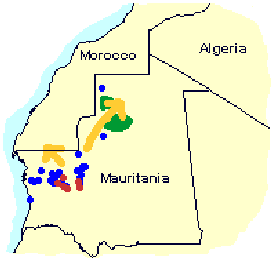7 December. Late breeding in N. Mali
The Desert Locust situation continues to remain calm. Late reports indicate that important locust populations are present in northern Mali as a result of October breeding. Although these were treated, residual populations could form a few small adult groups or swarmlets that may move to northern Mauritania (where good rains have fallen) and southern Algeria. Low numbers of locusts persist in northwestern Mauritania and Niger. A few adults have appeared in winter breeding areas on the Red Sea coastal plains of Sudan where good rains recently fell.
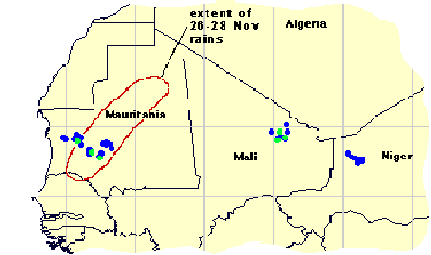
5 November. Small-scale breeding in West Africa
The Desert Locust situation continues to remain calm. Although small-scale breeding is in progress in western Mauritania and northern Niger, locust numbers are well below threatening levels. Solitarious adults are declining along the Indo-Pakistan border as vegetation is drying out. A few locusts will start to appear on the Red Sea coastal plains but no significant developments are expected in the coming weeks.
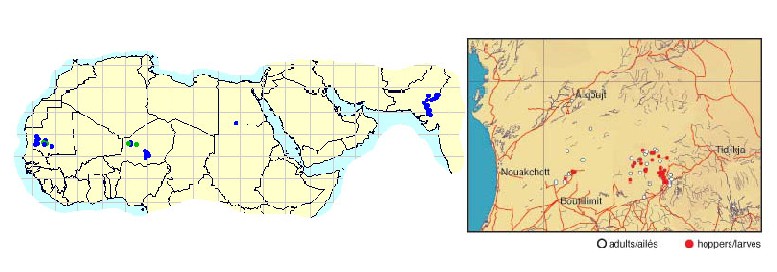
4 October 2001. Calm situation prevails in all areas
There have been no significant changes in the Desert Locust situation during the last month which continued to be calm in all areas of Africa and Asia despite unusually good breeding conditions. Only isolated instances of small scale breeding have been detected in southern Mauritania and northern Sudan so far. A few adults are present in these areas as well as in Niger, Egypt, on the Red Sea coast of Yemen and along the Indo-Pakistan border. Breeding is likely to start in northwest Mauritania and coastal Yemen but no significant developments are expected.
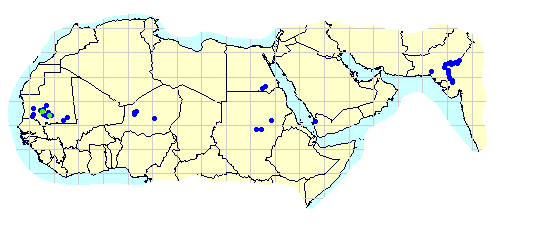
6 September 2001. Calm situation despite good breeding conditions
The Desert Locust situation continued to be calm in all areas of Africa and Asia despite unusually good breeding conditions in most areas. So far, only small scale breeding has been detected in southern Mauritania but may also be in progress in the interior of Sudan, the Red Sea coast of Yemen, and along the Indo-Pakistan border where good rains fell in August and low numbers of solitarious adults are present. Although locust numbers will increase gradually in the coming weeks, they are expected to remain at non-threatening levels.
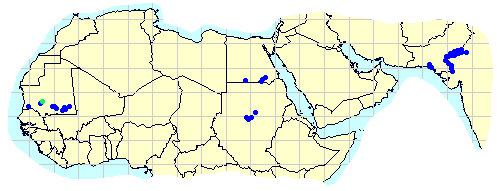
6 August 2001. Calm situation despite good breeding conditions
The Desert Locust situation continued to be calm in all areas of Africa and Asia. Despite good breeding conditions in West Africa, Sudan and along the Indo-Pakistan border where good rains fell in July, only insignificant numbers of solitarious adults have been reported from Sudan and Pakistan. Locust numbers will increase gradually during August but remain at non-threatening levels. No significant developments are expected in the coming weeks.
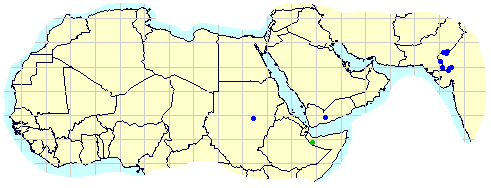
6 July 2001. Summer rains begin in breeding areas
The Desert Locust situation continued to remain calm in all areas of Africa and Asia. Only a few insignificant locust adults are present in Egypt where control operations were carried out in agricultural areas in the Western Desert against a mixture of Migratory Locust, grasshoppers and Desert Locust. Low numbers of adults appeared in the summer breeding areas along the Indo-Pakistan border. This coincided with the arrival of the monsoon rains in mid June which will allow small scale breeding to occur in the coming weeks. Good rains have fallen in the Sahel of West Africa and Sudan which should be sufficient to allow small scale breeding during July in Mauritania, Mali, Niger and Sudan. No significant developments are expected in the coming weeks.
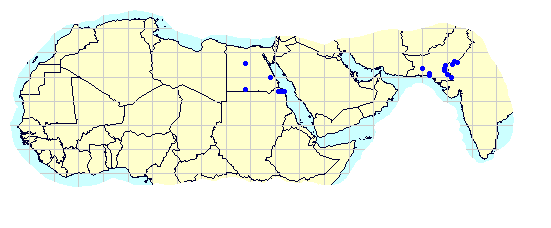
6 June 2001. Situation remains calm
The Desert Locust situation remains calm from West Africa to SW Asia. Only a few insignificant locust adults are present in southern Egypt, in the spring breeding areas of western Pakistan, and in north-western Somalia. Breeding conditions remain unfavourable in most countries except in parts of northern Somalia where some laying could occur. No significant developments are expected in the coming weeks.
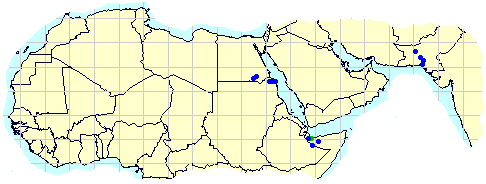
4 May 2001. Situation continues to remain calm
As dry and unfavourable breeding conditions continue throughout the recession area, the Desert Locust situation remains calm all countries. Only insignificant numbers of solitarious adults are present at a few places in northern Morocco, north-western Libya,the Red Sea coasts of Egypt and Saudi Arabia, and in the spring breeding areas of Baluchistan in western Pakistan. There were also unconfirmed reports of locusts in southern Mauritania.No significant developments are expected in the coming weeks.
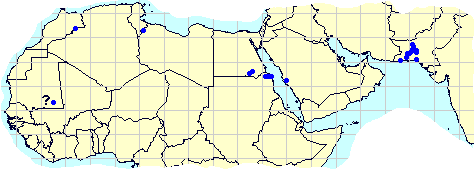
4 April 2001. Situation remains calm
As a result of generally dry and unfavourable breeding conditions throughout the recession area, the Desert Locust situation continues to remain calm. Only insignificant numbers of solitarious adults are present at a few places in northern Mauritania, northern Mali, north-western Libya, the Red Sea coast of south-eastern Egypt, in northern Somalia and in the spring breeding areas of Baluchistan in western Pakistan. Unless further rains fall, locusts will continue to decline in the coming weeks, and no significant developments are expected.
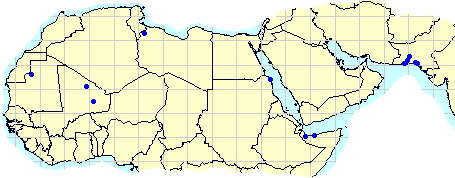
2 March 2001. Situation remains calm
Insignificant numbers of solitarious Desert Locust adults are present at two places in central and northern Mauritania, on the Red Sea coastal plains of Sudan and south-eastern Egypt, in crops near Lake Nasser, and on the northern Somalia coast. Low densities of hoppers were also present with the adults in central Mauritania and Sudan where breeding occurred during January. There was an unconfirmed report of some adults and hoppers in northern Mali in February. No significant rain has fallen in the past month, causing poor or unfavourable breeding conditions in most regions except for the coastal plains on the eastern side of the Red Sea. No significant developments are expected in the coming weeks.
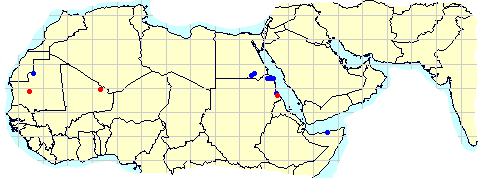
6 February 2001. Situation returns to calm
Locust numbers have declined in central Mauritania and scattered adults are present in the north where small scale breeding is in progress. Hopper bands and adults have been reported in the extreme north of Adrar des Iforas of Mali near the Algerian border and there are unconfirmed reports of a similar situation in southern Algeria. Clarification is awaited. Isolated breeding is in progress on the Red Sea coastal plains of Sudan and adults are present in south-eastern Egypt. A similar situation is expected in Eritrea, Saudi Arabia and Yemen but no significant developments are likely.
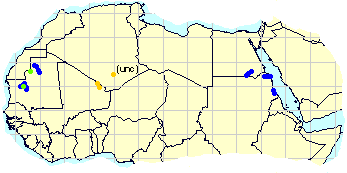
4 January 2001. Locusts starting to move north in Mauritania
Small groups of adults have formed from hopper bands as a result of an outbreak in central Mauritania, currently in its fourth month. Low numbers of adults are moving towards green vegetation in northern Mauritania where they will slowly mature and lay eggs in the coming months. Some adults may also move into southern Morocco and western Algeria. At this point, only limited control may be required. Elsewhere, insignificant numbers of locusts are present on the Red Sea coast of Sudan and others may be present on the coasts of Eritrea, Saudi Arabia and Yemen where small scale breeding is expected to occur.
